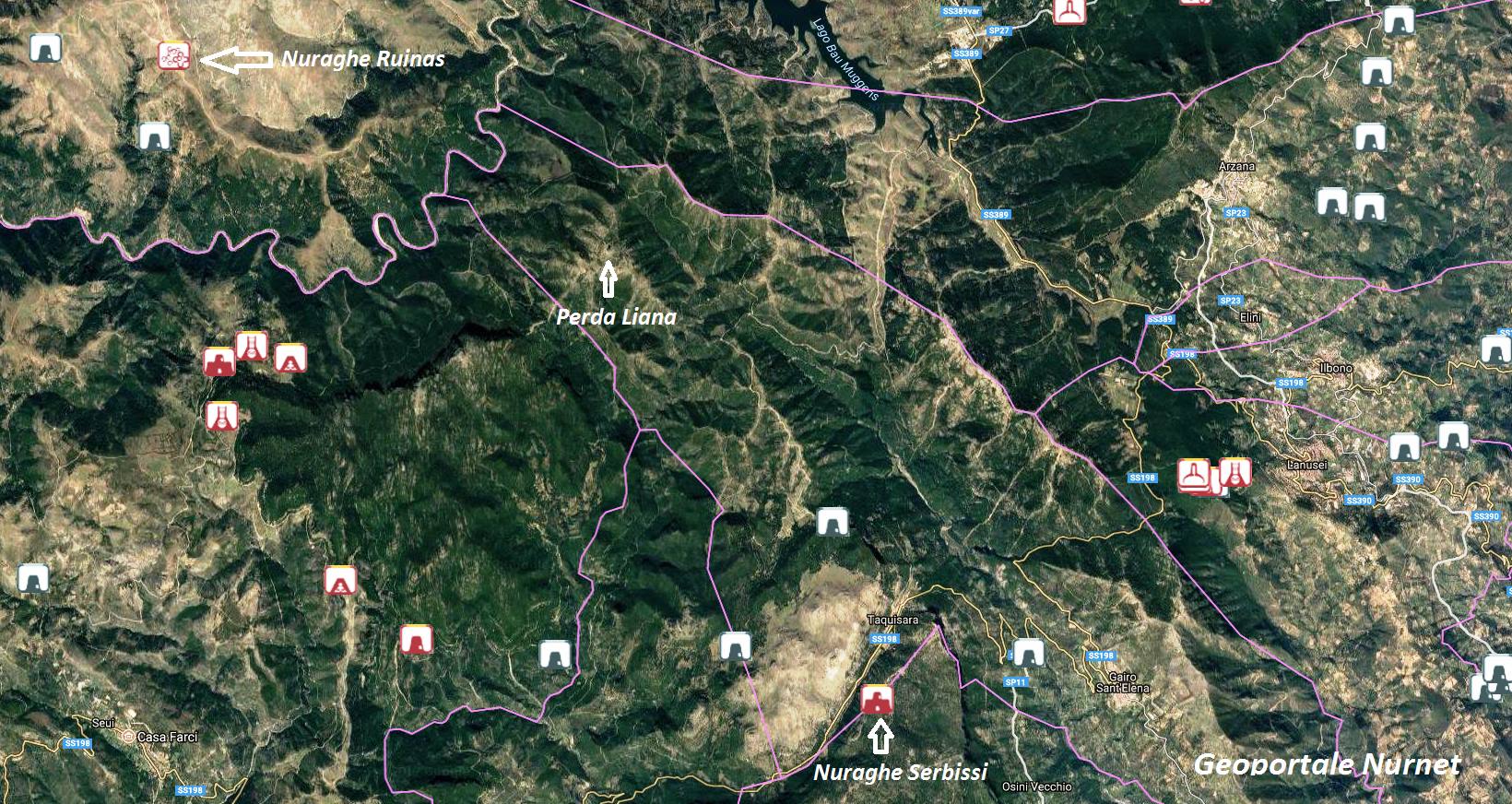<< The cartographic transcription of Perda ’e Liana is a hypercorrection of Perda Iliana, which we unequivocally attribute the meaning of ‘Rock of the Iliensi’, and Angius would agree, just as he wrote about the rock. Indeed, the epicenter of the immense space occupied by the largest of the three great nuragic tribes was right here. “It is said by ancient tradition that under this rock the Iliesi people, famous in Roman history for their eternal war against the island’s rulers, the Carthaginians and Romans, and for their maintained freedom, held their assemblies on common matters here. These Iliesi were descendants of the Pelasgians of Ilion, who after the fall of Troy established their seats in Sardinia…” The high rock is visible from Arcu Corru ’e Boi through a very narrow panoramic corridor that runs along the great valley of Villanova Strisàili. The original cylindrical shape (almost a stout column) formally contrasts with the “lunar arch” of Corru ’e Boi, creating the classic binomial Fertilizing God-Fertile Goddess (that is: the column-phallus representing the masculine element, the lunar crescent representing the Mother Goddess). Our ancestors, who scattered thousands of menhirs throughout Sardinia, had in Perda Iliana the only true Great Natural Totem, in permanent dialogue with the lunar crescent of Correboi, mutually divided-united by valleys rich in perennial waters. On the small plateau of Perda Iliana stood a nuraghe, as authoritatively attested by Alberto La Marmora. Its function as a dwelling or as a defensive tower was perfectly useless and out of place since the rock is accessible only to equipped climbers or with long makeshift ladders. Much more than at Gorropu, this nuraghe was nothing but a mystical sign, an extension towards the sky of the sacred virga represented by the columnar rock of Iliana…>>
Excerpt from “Sentiero Italia” by Salvatore Dedola.
The photos of the rock of Perda Liana are by Bibi Pinna and Sergio Melis. Those of the nuraghe Ruinas of Arzana and the nuraghe Serbissi of Osini are respectively by Alberto Valdès and Lucia Corda.













